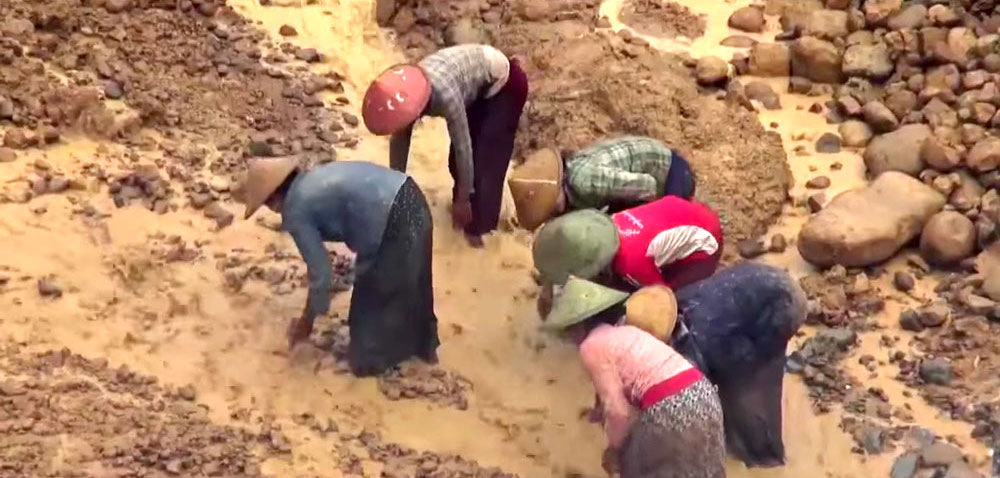
A lengthy investigation published by Radio Free Asia is putting the spotlight on the disastrous effects of the poorly regulated gold mining industry in Myanmar.
From unprecedented environmental destruction to the human toll of low-paying and hazardous jobs, RFA’s multimedia story delves deeply into the consequences of the country’s decision to open its mines to both multinational firms and local operators after almost half a century of restrictive access.
More than wealth, gold mining in Myanmar has brought unwelcome consequences, including environmental destruction and illnesses related to the illegal extraction of the precious metal.
Myanmar, also known as Burma, was under oppressive military rule from 1962 to 2011. In 2010, it started a liberalisation process and in 2016 it elected its first democratic government in decades.
In this new context, the Southeast Asian country started to attract investors from all sides of the world, who have been particularly interested in tapping into its almost untouched reserves of gold, tungsten, copper, and oil. The nation’s +$31 billion jade industry is also a magnet for foreign capital.
However, allegations of lax regulations when it comes resource extraction operations have been mounting over the past years, with authorities giving the blind eye to reporters’ and environmental groups’ claims.
RFA’s latest report focuses on a 200-hectare area called Mine Naung located in the Mohnyin district of Myanmar’s northern Kachin state. Quoting the head of the Kachin Development Network, the media outlet says that 18% of the state is being mined for gold on a large scale.

Due to its sudden opening to markets elsewhere, local residents now have access to heavy machinery such as backhoes. “The work that would normally take 10 years can be done in half a year,” a local resident told the broadcasting agency. The same person stated that the local authority earns approximately US$415 for each backhoe he licenses and US$580 in monthly fees from operators.
In the meantime, farmland at the base of nearby Hsin Gaung Mountain is being destroyed and water sources are getting polluted. “The Gaung Tone stream, which flows from the mountain through Mine Naung and had provided water for drinking and growing crops, now runs red and is full of silt, former village administrator Soe Myint told RFA’s Myanmar Service,” the multimedia story reads.
Work conditions are not safe either. Labourers, some of them as young as 14-years-old, work knee-deep in mud as a water suction pump sifts through the surrounding sand, dirt, and gravel for gold. Sometimes, columns of rock collapse. Women handle mercury with little protection.
All, for a pay of US$4.15 per day for men and US$2.50 for women.
Besides illnesses, harsh living and working conditions have brought drug problems to the small town, Radio Free Asia reports. The US-funded online service states that heroin, methamphetamines, opium, and “khat pon” consumption has skyrocketed in the district since 2010.
To full investigation can be accessed here.